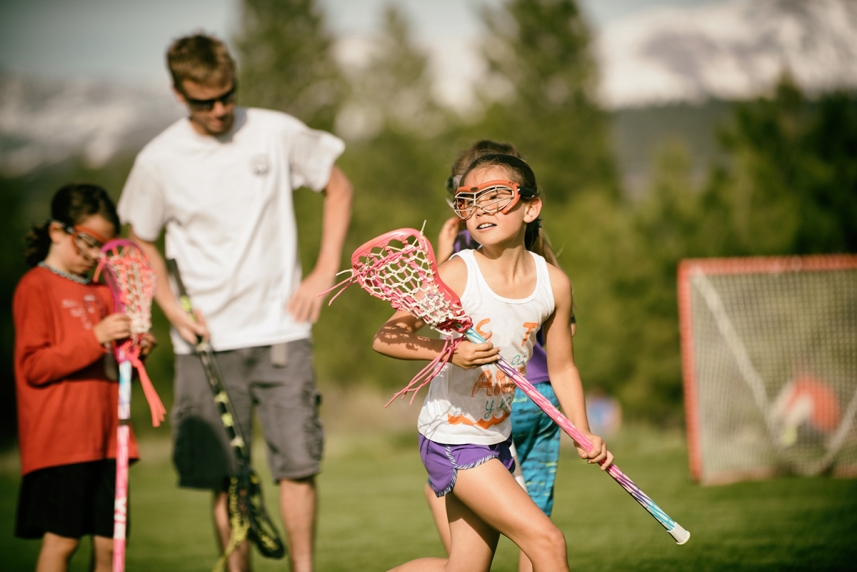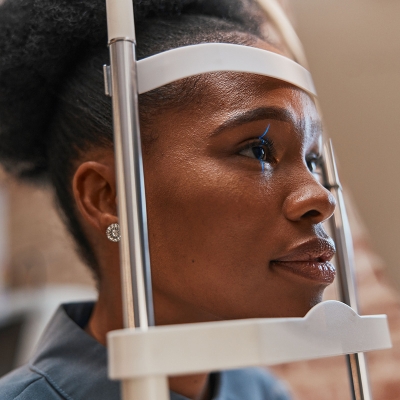Which contact lenses are best for children playing sports?
Kids need to stay safe while playing sports — and that may include picking the right eyewear to prevent injuries.

It’s not just exercise — children can get a lot of emotional and mental benefits from playing sports. Kids who play sports may have higher self-esteem and better social skills. Plus, sports may be good for a child’s moods.1
To get all the benefits of playing sports, though, children need to see well. Specifically, they need clear distance vision, good depth perception and a wide field of vision.2 If their vision needs to be corrected and they decide to wear contact lenses, it’s important to know that it’s a safe option on and off the field.
Is wearing contact lenses safer for some sports than others? What might parents keep in mind when choosing the safest option for their children? Read on to discover how to make that decision — and pick up some contact lens care tips that children can practice at home.
Contacts can help make games and practices easier (and more comfortable). Stock up on your child’s brand today.
What to know about children’s eyes when playing sports
Every year, thousands of children get eye injuries. Many of these injuries happen while kids are playing sports — in particular, baseball, among children ages 5 to 14.3 So, preventing eye injuries may be key when choosing eyewear for a child.
It’s a good idea to have a conversation with an eye care provider first. Parents may then want to schedule a comprehensive eye exam before their kids get involved in any sports.
That way, an eye care provider could walk parents through the various options for protective eyewear. They’ll also help parents figure out which one might be best suited for their child’s specific sport.
What to know about children and contact lenses
Contact lenses may be better for children who play certain types of sports, according to the U.S. Food and Drug Administration. That’s because contact lenses might not be in as much danger of breaking like eyeglasses might.4
“Contacts are less likely to be impacted by hard play,” explains Ronald L. Benner, O.D., president of the American Optometric Association. Contact lenses also have other advantages over eyeglasses for children who play sports. These might include:5, 6
- Contact lenses may offer more of a natural field of vision.
- Contact lenses may not fog up the way eyeglasses sometimes do.
- Contact lenses may provide sharper, clearer vision, especially for children who are very nearsighted (myopic), meaning objects that are far away may appear blurry (download this guide on nearsightedness in kids for more information).
When might be the right time for a child to begin wearing contact lenses? There isn’t an exact answer to this, but ideally, they should be responsible enough to:
- Handle taking care of their contact lenses on a daily basis
- Practice good hygiene, such as washing their hands
Some children may have these skills and be able to wear contacts in grade school, while some teenagers may still need time to develop them.6
That said, eye care providers may sometimes prescribe contact lenses to children as young as 6 or 7 to help manage nearsightedness, notes Dr. Benner. An eye care provider may advise parents on how soon their child may wear contacts.
What might be the best contact lenses for children who play sports?
If an eye care provider thinks that contact lenses might be a good choice for a child, they’ll likely recommend the soft, single-use kind. (Soft contact lenses are made from a flexible kind of plastic that makes it easier for oxygen to pass through them.)
“These are daily, disposable contact lenses that are stable on the eye when participating in a sports activity,” says Dr. Benner.
Another benefit to daily disposable contact lenses? They provide better contrast vision, or brightness, notes Dr. Benner. With daily disposable contact lenses, kids will have “a fresh new pair of lenses each time they play,” he adds.
Also, daily disposable contact lenses may lower the odds of a child getting an eye infection. Kids can just toss them out at night and put in a new pair every morning.
How might kids care for their contact lenses at home?
Learning the proper way to care for contact lenses is critical for eye health. And it can cut down on the risk of eye infections. It’s a good idea for children to learn these habits, no matter what type of contact lens they might wear:7
- Always wash hands carefully with soap and water and dry them with a lint-free towel before removing contact lenses from the eye.
- Take out contact lenses before bedtime. Nobody should sleep with their contact lenses on.
- Always take out contact lenses before showering or bathing
- Don’t use saliva or tap water to clean contact lenses. As tempting as it may be to rewet a lens in the mouth or under the faucet, doing so can introduce bacteria into the eye. Neither saliva nor tap water is sterile, nor is it a stand-in for contact lens solution.
- Store contact lenses in a contact lens container (if wearing non–daily disposable contact lenses).
- Clean the contact lens container well. Rinse it with contact solution (not plain water) and allow it to air dry. Replace the container about every 3 months.
What might be the best eye protection for kids who wear contacts and play sports?
Even though contact lenses may be a better option for kids playing certain sports, they will not protect children’s eyes from a soccer ball or baseball, for instance, if it were to hit them in the face.
That’s why experts may recommend that children wear special protective glasses or goggles over their contacts while playing sports. The frames are made from polycarbonate. That’s a material strong enough that it won’t shatter or break if hit by a ball or another player.4
If possible, try to ensure that these specialty sports frames meet the standards of the American Society of Testing and Materials (ASTM). That means they have been tested to the correct impact resistance standards.8
Another option for children might be getting a pair of protective prescription sports glasses instead. “They offer more stable vision as well as better peripheral vision, and they’re made of stronger materials that are designed for ultimate impact resistance and durability,” says Dr. Benner.
Swimmers who wear contact lenses also need to put on a pair of snug-fitting goggles. “This prevents exposure to water, as there’s a chance that bacteria can adhere to the lens and cause an eye infection,” says Dr. Benner.
The bottom line: An eye care provider may help guide parents on the best types of contacts for their children who play sports. Just make sure they get the proper protective eyewear along with their contact lenses. That’ll keep their eyes safe while they’re playing. Talk about a win-win situation.
Comfort is key when it comes to contacts. Find your child’s new favorite contacts now — and save 10%.
Sources:
- Play ball! Team sports are good for kids’ mental health Cleveland Clinic, August 2023.
- School-aged vision: 6 to 18 years of age American Optometric Association.
- Children’s eye injuries: prevention and care American Academy of Ophthalmology, April 2023.
- What to know if your child wants contact lenses U.S. Food and Drug Administration, last updated August 2023.
- Types of contact lenses American Optometric Association.
- What to know if your child wants contact lenses U.S. Food and Drug Administration, last reviewed August 2023.
- How to take care of contact lenses American Academy of Ophthalmology, April 2022.
- Does my child need eye protection for sports? American Academy of Pediatrics, last updated November 2023


